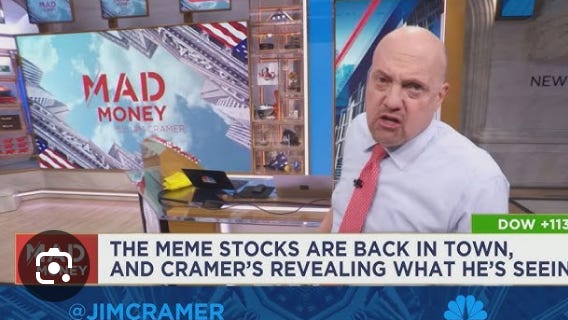Kingdom Capital Report
JAPAN BREATHES FIRE AGAIN
KINGDOM CAPITAL REPORT
Today’s Marks Sunday 11/23
• Bitcoin: ~$84,000
• Ripple: ~$0.45–$0.50 range
• Gold: ~$4,065/oz
• Silver: ~$50.01/oz (high volatility)
• Copper/Nickel $10,685/$14,620/ton
• Land: Long Term Tracking Initiated
• Stablecoins: USDT/USDC holding $0.9992–1.0007 microband
JAPAN BREATHES FIRE AGAIN
There are weeks when markets rise quietly and weeks when they fall loudly. This was the second kind. Crypto looked weak on the screen, but the weakness did not come from crypto. It came from the world’s money.
The most important event did not happen on an exchange. It happened in Tokyo.
Japan approved a $265B stimulus package while its currency sits at a 35-year low. In a normal cycle, stimulus accompanies strength. This time it accompanies exhaustion. The yen is collapsing, so the government prints. But when the yen collapses, the Bank of Japan will eventually have to hike rates to stop the bleeding. A weak currency and a coming rate hike form a contradiction so sharp it cuts the carry trade in half.
Japan has been the silent heartbeat behind global liquidity for thirty years. Its zero-yield regime funded everything: U.S. Treasuries, global equities, crypto, emerging markets, tech. Now yields have broken above 2.7%, and Tokyo is throwing money at a currency crisis. The quiet assumption that Japan would always stay at zero is gone.
The ground has shifted.
The second catalyst came from the AI world. Analysts admitted openly that the AI sector is running on a reflexive loop of capital, not on delivered value. Money is being raised to buy hardware that requires more money to justify the previous round of money. It is a circular engine, like a heart pumping into itself. Bubbles end not through logic but through exhaustion.
These two forces—Japan’s crisis and AI’s hollow capital cycle—mirror each other. They reveal the same truth: modern financial architecture is running on closed circuits instead of real value. Liquidity is breath, and the world is panting.
Then crypto took the hit. But the hit was not a verdict on Bitcoin. Bitcoin is the seismograph.
KINGDOM CAPITAL ASSET ANALYSIS
Bitcoin (~$84,000)
Bitcoin fell from the $110s to the $80s in a matter of days. A 20–25% drawdown is dramatic visually, drawing the classic Cramer “Wolf"!” cry. But this structurally normal when global liquidity buckles. Tokyo’s actions forced liquidations across yen-funded positions. That is why Bitcoin moved first and hardest.
Bitcoin’s contraction signals stress in the funding system, not the failure of its thesis. There was no collapse in stablecoins, no structural breach, no breakdown in network health. Just forced selling into thin air.
At ~$84k, Bitcoin is sitting where it normally sits during liquidity vacuums: in a zone where patient accumulation replaces hysteria. This is not strength or weakness. This is breath. If you’ve never bought, do some research for yourself on “dips.”
Ripple (~$2.04 = down ~$0.50)
Ripple absorbed a heavy blow. This is expected. Ripple is supposed to look bad, so the conspiracists say. Asian flows dominate its structure. When Japan shocks the world, XRP shows the bruise. Its dip reflects funding strain, not unique failure. It continues to function as a liquidity-sensitive asset, not a scarcity-sensitive one.
Gold (~$4,065/oz)
Gold softened slightly from highs, but the overall posture remains strong. Gold listens to macro structure. When Japan breaks a 30-year yield regime, gold’s geometry does not change direction. It simply waits for lagging markets to wake up.
Gold continues to reflect distrust in global bookkeeping.
Silver (~$50.01/oz, extremely volatile)
Silver behaved like a live wire.
Japan’s actions tensed the synthetic paper market. Silver’s price does not reflect true supply; it reflects the leverage used to suppress it. When global FX destabilizes, those suppression mechanisms vibrate violently.
Silver is not irrational. It is the truth trying to break through a cage.
Copper / Nickel (mild uptrend)
Japan’s stimulus is inflationary. A stimulus of this size, with a weakening currency, increases demand on commodities even if the economy is not healthy.
Industrial metals are drifting upward, not because the world is growing, but because money is weakening.
Stablecoins (USDT/USDC ~$$0.9991–$1.0008 +/- weekly)
This is the most important truth of the week. Stablecoins tell the truth better than fiat does. The micro-fluctuation range shows: Stablecoins revealed the dollar as a breathing animal with shallow lungs, not a collapsing system.
No USD shortage panic (no spike above $1.001).
No liquidity flood panic (no sustained drop below $0.998).
Just instability in the cost of money, not instability in the money itself.
Signal: no panic, no dollar shortage, no liquidity swamp, but clear instability in the price of money itself. Dollar is stressed but not breaking.
Land (glacial strength)
Land did what land always does: nothing outwardly, everything structurally. Land remains the oldest honest scale. It is unaffected by yen-carry reversals, AI bubbles, or Treasury liquidity floods.
Land is not a financial asset in essence. So, it is immune to Japan’s synthetics. In a world of shifting false weights, land is what Proverbs calls “a sure dwelling.” Land, by definition, does not move.
THE GEOMETRY
This week produced a perfect three-vector convergence:
• Japan liquefied its economy into a currency crisis.
• AI revealed itself as a circular capital loop rather than a value engine.
• Crypto absorbed forced liquidation pressure.
Japan—a torch thrown into the carry-trade haystack. AI—a fire burning through the dry brush of speculation. Crypto—a smoke alarm screaming before the flames appear.
All three expose one deeper reality:
The global order is running on dishonest scales, and those scales are slipping. Not collapsing—slipping.
When false weights shift, honest weights rise by comparison. Bitcoin, metals, and land are not rising because they are “great.” They are rising because the measuring stick is bending. This is the Solomonic and Ardic truth: when the false denominator rises (fraud), the numerator (energy, truth, scarcity) looks volatile. But the volatility is the denominator dying, not the numerator failing.
Bitcoin’s fall was the denominator rising, not the numerator collapsing. Silver’s spasms were suppressed truth shuddering. Gold’s calm was generational memory speaking. Land’s stillness was eternal arithmetic. Dishonest scales were sliding.
Honest scales always stand.
The Read
Japan’s $265B stimulus package is the a consequential warning sign. It is policy reaching for a cork after the wine has already spilled—loud, hurried, and revealing far more than it solves.
The AI reflexive loop is another. Capital pumping into capital to justify prior capital is not growth; it is respiration inside a sealed room. Bitcoin’s fall exposes the structure, not Bitcoin’s weakness. The ledger did not blink. The funding environment did. Silver’s violence is suppressed price discovery, a strong man buried alive and refusing to stay dead. Gold is the quiet adult in the room. It neither boasts nor panics; it remembers. Stablecoins show the dollar panting but not dying. The micro-band tells the truth with more clarity than the Treasury’s press releases.
Land is the anchor. Not a metric, not a ticker—just reality, still and immovable.
When the nations choose dishonest weights, honest weights rise—not by magic but by the stubborn, immovable physics of truth. Nothing here signals collapse. Everything here signals: trust honest scales.





